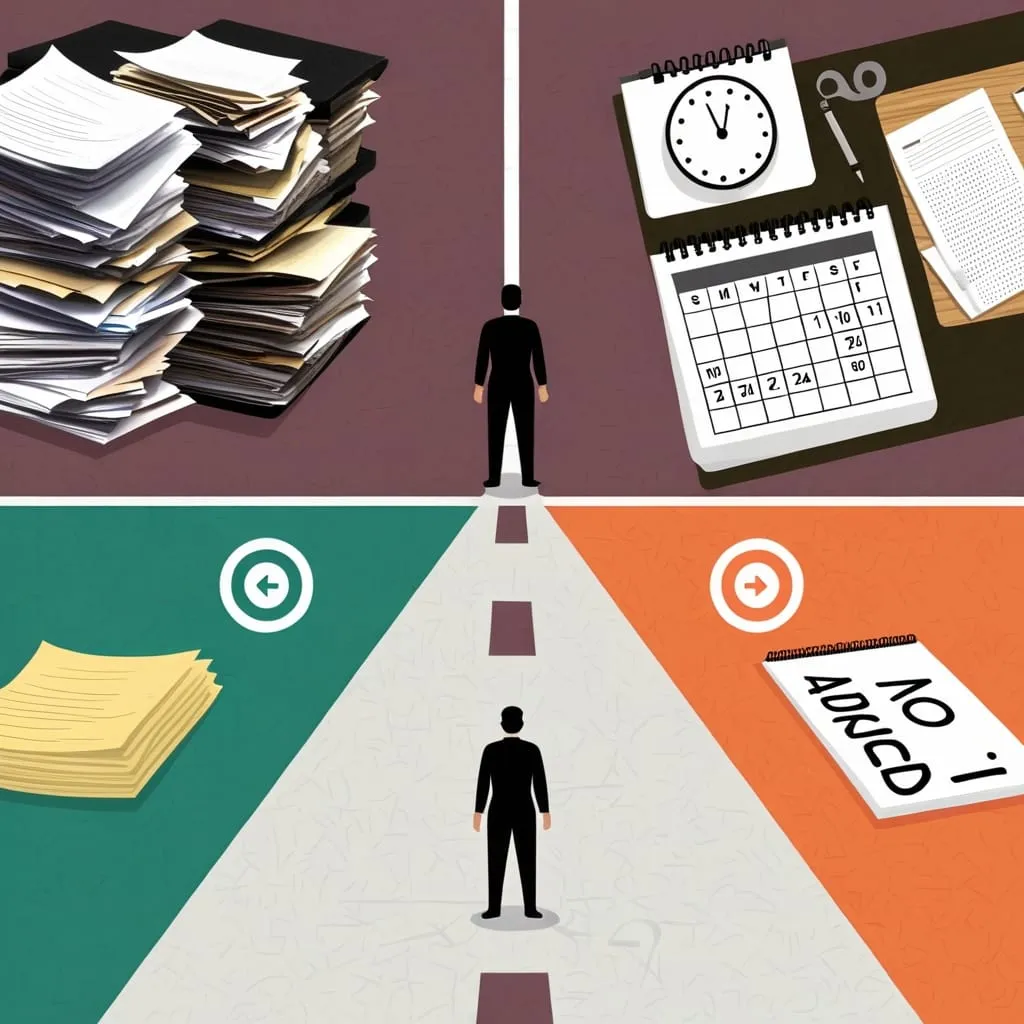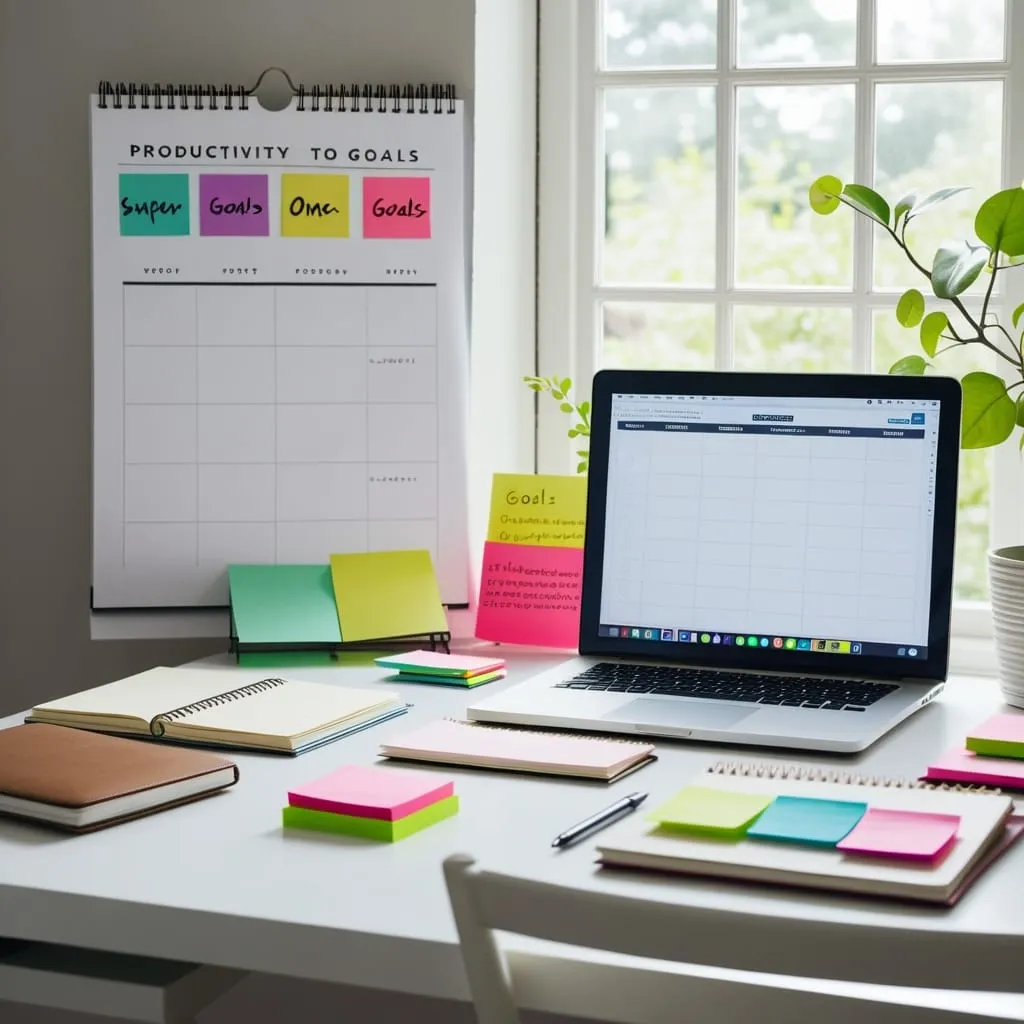The Productivity Trap: Why Your To-Do List Might Be Holding You Back
We've all been there. You start your day with the best intentions, armed with a carefully crafted to-do list. But as the hours tick by, you find yourself drowning in a sea of tasks, unsure where to start or how to make meaningful progress. Sound familiar? You're not alone.
To-do lists have long been hailed as the holy grail of productivity. They're supposed to keep us organized, focused, and on track. But what if I told you that your trusty to-do list might actually be sabotaging your productivity? It's time to take a closer look at this productivity paradox and explore some game-changing alternatives.
Let's start with the elephant in the room: the never-ending list. You know the one I'm talking about. It starts innocently enough, with a few important tasks jotted down. But before you know it, it's grown into a monstrous catalog of every single thing you need to do, want to do, or think you should do. It's like a hungry beast that's never satisfied, constantly demanding more of your attention and energy.
The problem with these mammoth lists is that they overwhelm our brains. When faced with too many choices, our minds go into what psychologists call "decision paralysis." We freeze up, unable to decide where to start. It's like standing in front of a massive buffet, so overwhelmed by the options that you end up not eating anything at all.
I once knew an insurance broker who had a to-do list that spanned six pages. Six pages! Can you imagine trying to tackle that every day? It's no wonder he felt constantly stressed and unproductive. His brain was in a perpetual state of "spin mode," jumping from task to task without ever really accomplishing anything substantial.
But it's not just the length of the list that's the problem. It's also how we prioritize tasks. Let's be honest: how many times have you chosen to tackle the easiest tasks first, just for the satisfaction of crossing something off your list? I know I've been guilty of this. It feels good to see those items disappear, doesn't it? But here's the kicker: while you're busy crossing off small, inconsequential tasks, the big, important stuff keeps getting pushed to the bottom of the list.
Imagine you're a salesperson working on a crucial deal. Your to-do list might include things like "Send follow-up email," "Update client database," and "Prepare presentation for potential client." Guess which one often gets done first? Yep, the quick and easy email. Meanwhile, that all-important presentation keeps getting postponed. It's like trying to fill a bucket with water when there's a hole in the bottom. You're busy, but you're not making real progress.
Another issue with to-do lists is the never-ending nature of them. You cross one thing off, and two more take its place. It's like fighting a productivity hydra! This constant state of unfinished business can be incredibly demoralizing. You might leave the office on Friday feeling like you've accomplished nothing, even if you've been working your tail off all week.
This phenomenon is often called "a thousand maybes" - a collection of "should" or "someday" items that linger in the back of your mind, causing low-grade stress and anxiety. It's like having a nagging voice constantly reminding you of all the things you haven't done yet. Talk about a productivity killer!
And let's not forget about the cognitive load of managing a long to-do list. It's like trying to juggle too many balls at once. Eventually, you're going to drop some. When you're faced with a lengthy list, your brain has to work overtime to decide what to do first. This mental juggling act can lead to fatigue and decreased productivity.
I once knew someone who was obsessed with labeling and sorting their to-do list. They had categories, subcategories, color codes - the works. It was impressive, but here's the catch: they spent more time organizing their list than actually doing the tasks on it. Talk about missing the forest for the trees!
So, what's the solution? How do we break free from the tyranny of the to-do list? The answer lies in shifting our focus from task management to time management. This approach, known as "timeboxing," has been embraced by some of the most successful entrepreneurs and thought leaders out there.
Here's how it works: instead of starting your day with a long list of tasks, take a few minutes to identify your top three priorities for the day. Then, block out specific times in your calendar for each of these tasks. This forces you to prioritize what's truly important and ensures that you're focusing on the tasks that will have the greatest impact.
Let's say you're working on a critical project. Instead of adding it to a never-ending to-do list, you might block out two hours in the morning to focus solely on that task. This approach helps you avoid multitasking (which, by the way, is a productivity myth) and ensures that you're making deliberate progress on your goals.
Using your calendar as a time management tool is incredibly powerful. Instead of a vague list of tasks, you have a concrete schedule that tells you exactly what you need to do and when. This clarity helps you stay focused and makes it easier to say no to distractions or low-priority tasks.
For example, if you have a meeting scheduled at 10 AM, you know exactly what you need to do before that meeting. There's no ambiguity, no decision paralysis. You simply follow your schedule and get things done.
Another effective strategy is the Two Lists approach. Instead of one massive to-do list, you create two: an Impact List and a To-Do List. Your Impact List contains tasks that move you towards your goals, while your To-Do List is for administrative or routine tasks.
Let's say you're working on a financial project. Your Impact List might include tasks like analyzing market trends or creating a financial model. These are the big-ticket items that will really move the needle. Your To-Do List, on the other hand, might include tasks like responding to emails or updating spreadsheets. By prioritizing your Impact List, you ensure that you're making progress on what truly matters.
Now, I know what you're thinking. "But what about all those other tasks? They need to get done too!" And you're right. That's where delegation comes in. It's time to embrace the art of letting go.
If you have a team, delegate tasks that can be handled by others. If you're working solo, consider which tasks can be postponed or eliminated altogether. Ask yourself: "Is this task essential to achieving my goals?" If the answer is no, it might be time to let it go.
For instance, if you're a financial advisor, you might delegate tasks like data entry or client communication to an assistant. This frees up your time to focus on higher-value tasks like financial planning or investment analysis. Remember, your time is valuable. Use it wisely.
At the end of the day, productivity isn't about crossing off as many tasks as possible. It's about making deliberate choices about how you spend your time and energy. It's about achieving your goals and feeling a sense of accomplishment when you close your laptop at the end of the day.
So, the next time you're tempted to create a long to-do list, pause for a moment. Consider taking a different approach. Block out time in your calendar for your most important tasks. Create separate lists for high-impact and routine tasks. Learn to delegate and let go of non-essential items.
Remember, you're in control of your time and your productivity. Don't let a never-ending to-do list dictate your day. Instead, take charge of your schedule and focus on what truly matters. Your productivity - and your sanity - will thank you.
Breaking free from the to-do list trap isn't easy. It requires a shift in mindset and some new habits. But trust me, it's worth it. When you start managing your time instead of your tasks, you'll find yourself accomplishing more, feeling less stressed, and actually enjoying your work again.
So, are you ready to ditch the never-ending to-do list and embrace a more effective approach to productivity? Your future, more productive self is waiting. It's time to take that first step. After all, the most important item on your to-do list should be ditching the to-do list itself!






